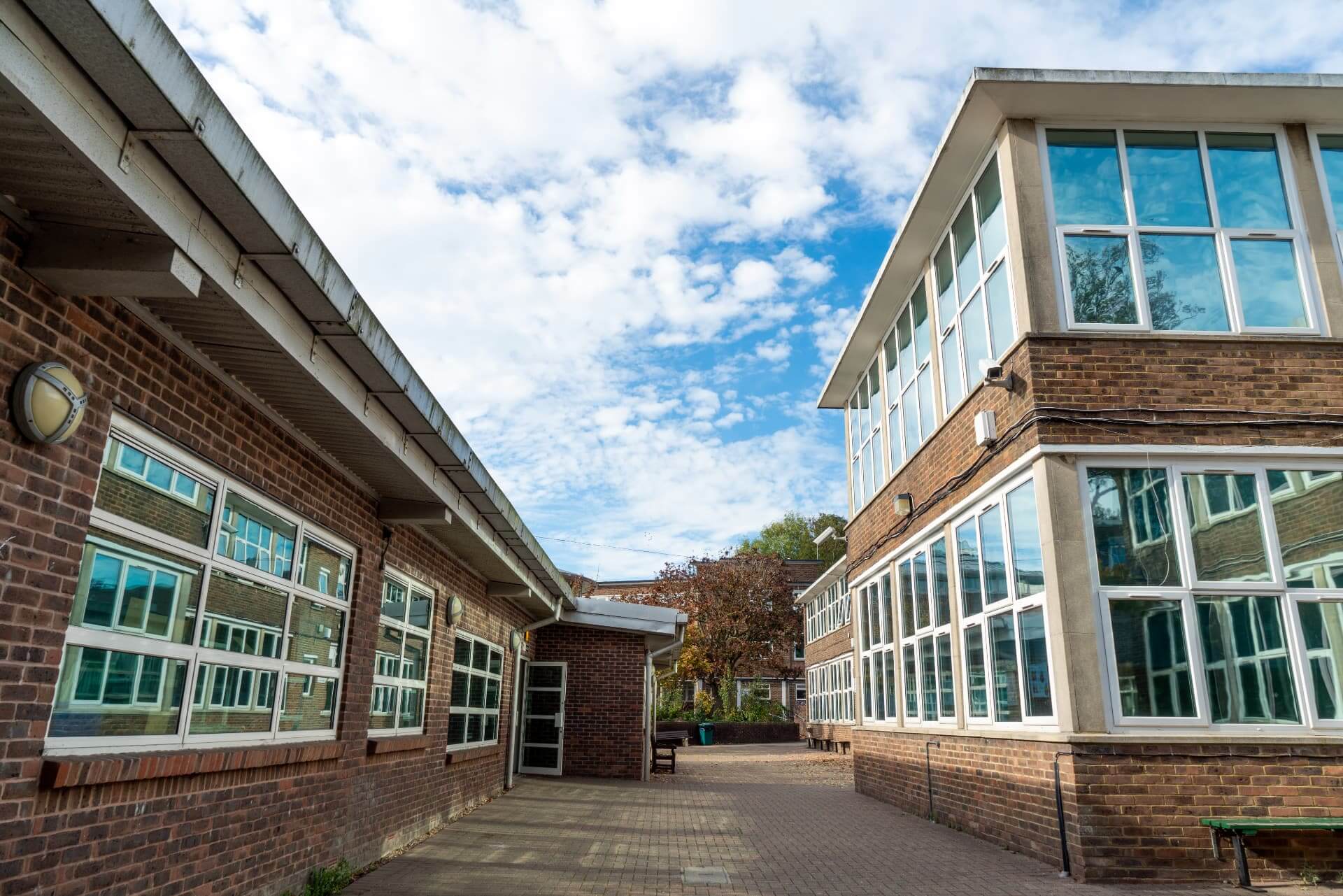Insulating a school or college
Insulating your school buildings is an important step in improving energy efficiency, reducing heating costs, and creating a comfortable learning environment for students and staff alike. There are several different areas where insulation can be needed. Here are some common approaches which are often combined to get the best results:
Wall insulation: Insulating exterior walls can significantly improve thermal performance. Two commonly used types of wall insulation are batt insulation and rigid foam insulation. Batt insulation consists of fibreglass or mineral wool that is placed between wall studs. Rigid foam insulation is installed on the exterior of the walls before applying the cladding material.
Roof insulation: Adequate insulation in the roof helps to prevent heat gain during hot weather and heat loss during cold weather. Common types of roof insulation include fibreglass batts, loose-fill insulation, and rigid foam insulation. It is essential to ensure proper ventilation in the attic space to prevent moisture buildup.
Window and door insulation: Windows and doors are areas where significant heat transfer can occur. Upgrading to energy-efficient windows with double or triple glazing and low-emissivity coatings can improve insulation. Weatherstripping and caulking should also be used to seal gaps around windows and doors.
Floor insulation: Insulating the floors can help reduce heat loss and create a more comfortable environment. Depending on the construction of the school, insulation materials such as fibreglass batts or rigid foam boards can be installed under the flooring.
Pipe and ductwork insulation: Insulating ducts and pipes can help minimize heat loss during distribution. Insulated ductwork prevents energy losses and ensures that conditioned air reaches the intended areas efficiently. Pipe insulation can also reduce heat loss from hot water or steam pipes.
Energy audits: Conducting energy audits can help identify areas that need insulation improvement. Using detection equipment, professionals can assess a school’s or college’s energy usage, detect areas of heat loss, and recommend insulation solutions tailored to the specific needs of the facility.
It’s important to consult with insulation professionals or energy experts who can evaluate the school’s insulation requirements and provide guidance on the best materials and methods to use. Additionally, local building regulations should be followed during any insulation projects.
Insulation regulations
In the UK, the building regulations that govern insulation requirements for schools fall under Part L (Conservation of Fuel and Power) of the Building Regulations. These regulations set out the minimum standards for energy efficiency in new buildings, including schools, as well as for certain types of renovations or refurbishments.
The specific requirements for insulation in schools may vary depending on factors such as the type of school building, its location, and the scope of the project. However, some general principles and standards apply:
Building fabric insulation: The regulations require the building fabric, including walls, roofs, and floors, to have appropriate levels of insulation to limit heat loss or gain. The insulation materials and thicknesses should be chosen to achieve the required U-values (measure of thermal transmittance). The U-values specify the maximum thermal conductivity allowed for different elements of the building.
Windows and doors: The regulations also set standards for the thermal performance of windows and doors. These standards typically require the installation of double or triple glazing with low-emissivity coatings to minimize heat loss.
Air permeability: Part L also includes requirements for air permeability, which is the measure of how much air can pass through the building envelope. Adequate insulation and sealing of gaps and joints are crucial to achieving the required level of airtightness.
Energy efficiency measures: In addition to insulation, the regulations may encourage or require the implementation of other energy-saving measures. These may include efficient heating systems, energy-efficient lighting, and controls for optimizing energy usage.
It’s important to note that building regulations are periodically updated, so it’s essential to consult the most recent version of Part L for the specific requirements at the time of construction or renovation. Additionally, local authorities or planning departments may have additional guidelines or policies that need to be considered.
To ensure compliance with the regulations and to determine the appropriate insulation requirements for a school project, it’s advisable to work with professionals such as architects, building services engineers, or energy consultants who are familiar with the current regulations and can provide tailored advice based on the specific project needs.
OJM Insulations
The schools and colleges specialist
OJM Insulations has undertaken numerous school, college and university insulation projects over the last 20 years. We specialise in pipework and ductwork insulation and are fully conversant with the regulations in this area. If you are considering work this year, then now is the ideal time to reach out to ensure that your work can be completed during the school holiday period – in time for the approach of colder weather!
Call us now on 01245 425511 to discuss your school’s or college’s insulation needs.

